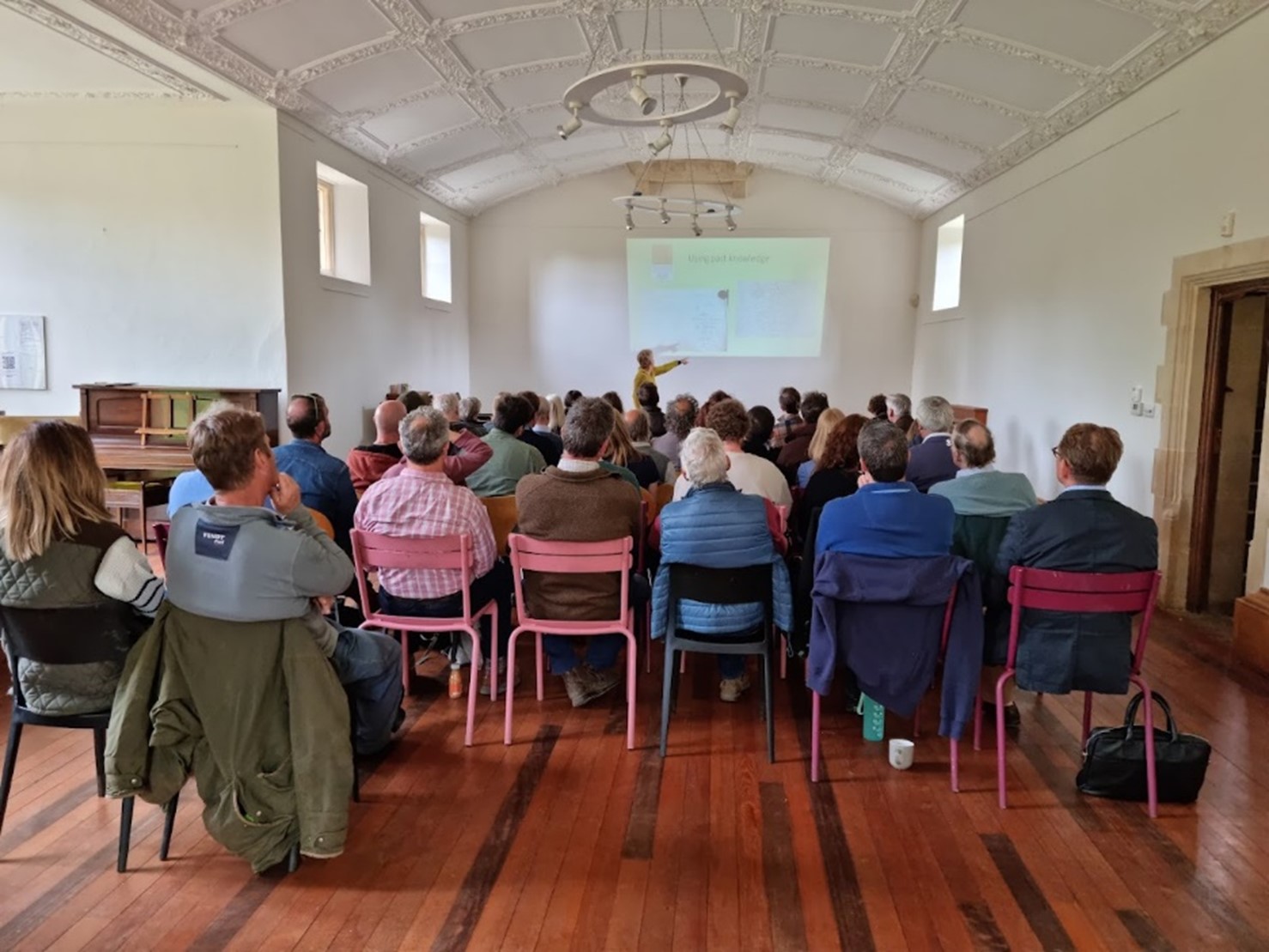The Windrush catchment is recognised as being important for species-rich floodplain meadows, both in terms of existing extent, and potential for restoration. A 20-year strategy for floodplain meadow restoration project was therefore funded by the Farming in Protected Landscapes scheme and delivered by North-East Cotswolds Farmer Cluster, FWAG-SW, Glorious Cotswolds Grasslands and ourselves.
The catchment was already known to contain a significant extent of high-quality floodplain meadows. To underpin the strategy with more data, we enjoyed an epic season in summer 2023 gathering botanical information. We identified 78 ha of lowland meadows of priority habitat quality, 115 ha of semi improved grassland with varying species richness (suitable for restoration in the short term), and a whopping 463 ha of semi-improved grassland that is potentially suitable for restoration in the medium and long term.
We had an historic assessment of floodplain meadow extent carried out by Fjordr, which identified a minimum of 1098 ha of floodplain meadow from old Tithe and OS maps, and also carried out more detailed floodplain meadow restoration plans for 5 sites.
This information has been used to develop a series of criteria based on the physical characteristics that shape whether floodplain meadow restoration is possible, to identify where there are opportunities to restore the target plant communities found on floodplain meadows. It also provides recommendations for filling existing data gaps, funding opportunities and mechanisms for future delivery.
The strategy also identifies how to determine where floodplain meadows are not a suitable restoration objective, and where other land uses and habitats, such as wetlands for waders and wildfowl, may therefore be more appropriate.
As part of the conversation about longer term land use and the findings of the strategy, we (all the partners) organised an event with farmers, landowners and other interested individuals and organisations in the valley in June 2024, to share the findings and talk about the future. This event was held at the fabulous Asthall Manor and included a workshop session to gather feedback on the strategy and possible next steps. It was really well attended, and we have gathered some very useful feedback. Key points include:
- A wider range of habitats could be considered in a future project
- People are nervous about committing to projects long term and wish to retain independence in decision making, but are broadly positive about a large scale project for restoration.
- There are issues around access to livestock and moving livestock around the catchment.
- Suggestions for possible future actions included: securing small machinery for cutting difficult sites and brush harvesting kit; a database of grazing contacts; employing a grazing manager; and future training and support in the shape of economic modelling, site visits, a section on the cluster website with all information in one place, training in meadow management and restoration, signposting, and sessions for learning from each other.
All the partners now need to finalise the strategy and work together to see what comes next. Some of the future will depend on funding opportunities, but there are already funding mechanisms in place to support restoration activity on a farm by farm basis and this activity will continue.
We would like to take this opportunity to thank all the landowners for working with us on behalf of all the partners on the Windrush Floodplain Meadows project and giving permission to access their land.
